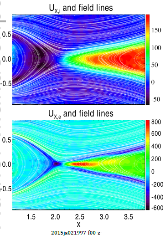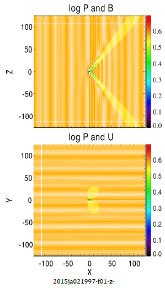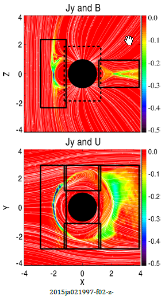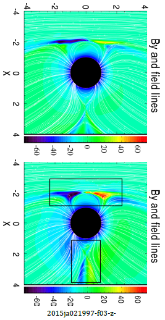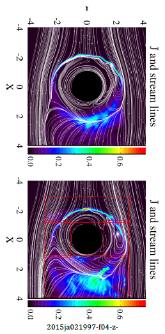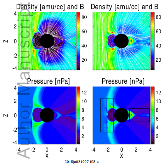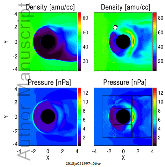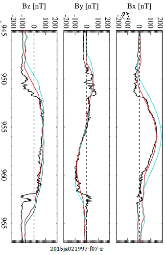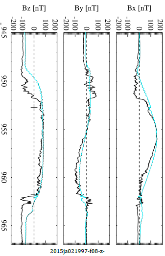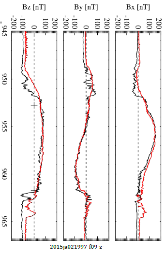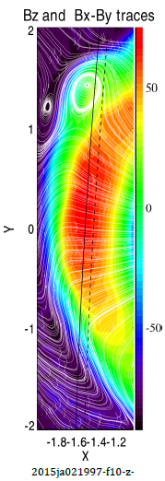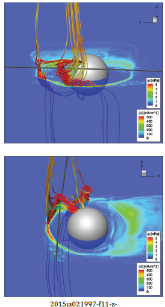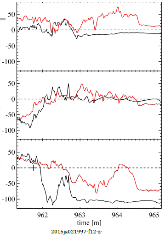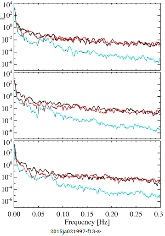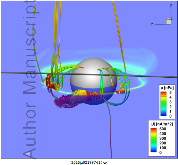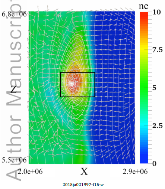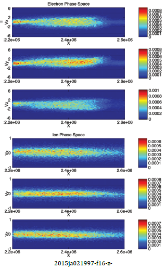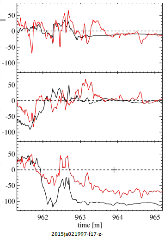Extended magnetohydrodynamics with embedded particle-in-cell simulation of Ganymede's magnetosphere
- Univ. of Michigan, Ann Arbor, MI (United States)
- KTH Royal Institute of Technology, Stockholm (Sweden)
- NASA Goddard Space Flight Center, Greenbelt, MD (United States)
Here, we have recently developed a new modeling capability to embed the implicit particle–in–cell (PIC) model iPIC3D into the Block–Adaptive–Tree–Solarwind–Roe–Upwind–Scheme magnetohydrodynamic (MHD) model. The MHD with embedded PIC domains (MHD–EPIC) algorithm is a two–way coupled kinetic–fluid model. As one of the very first applications of the MHD–EPIC algorithm, we simulate the interaction between Jupiter's magnetospheric plasma and Ganymede's magnetosphere. We compare the MHD–EPIC simulations with pure Hall MHD simulations and compare both model results with Galileo observations to assess the importance of kinetic effects in controlling the configuration and dynamics of Ganymede's magnetosphere. We find that the Hall MHD and MHD–EPIC solutions are qualitatively similar, but there are significant quantitative differences. In particular, the density and pressure inside the magnetosphere show different distributions. For our baseline grid resolution the PIC solution is more dynamic than the Hall MHD simulation and it compares significantly better with the Galileo magnetic measurements than the Hall MHD solution. The power spectra of the observed and simulated magnetic field fluctuations agree extremely well for the MHD–EPIC model. The MHD–EPIC simulation also produced a few flux transfer events (FTEs) that have magnetic signatures very similar to an observed event. The simulation shows that the FTEs often exhibit complex 3–D structures with their orientations changing substantially between the equatorial plane and the Galileo trajectory, which explains the magnetic signatures observed during the magnetopause crossings. The computational cost of the MHD–EPIC simulation was only about 4 times more than that of the Hall MHD simulation.
- Research Organization:
- Los Alamos National Laboratory (LANL), Los Alamos, NM (United States)
- Sponsoring Organization:
- USDOE Laboratory Directed Research and Development (LDRD) Program
- Grant/Contract Number:
- 89233218CNA000001
- OSTI ID:
- 1493561
- Report Number(s):
- LA-UR-18-31266
- Journal Information:
- Journal of Geophysical Research. Space Physics, Vol. 121, Issue 2; ISSN 2169-9380
- Publisher:
- American Geophysical UnionCopyright Statement
- Country of Publication:
- United States
- Language:
- English
Web of Science
Similar Records
Scaling the Ion Inertial Length and Its Implications for Modeling Reconnection in Global Simulations
Different FTE signatures generated by the bursty single X line reconnection and the multiple X line reconnection at the dayside magnetopause
